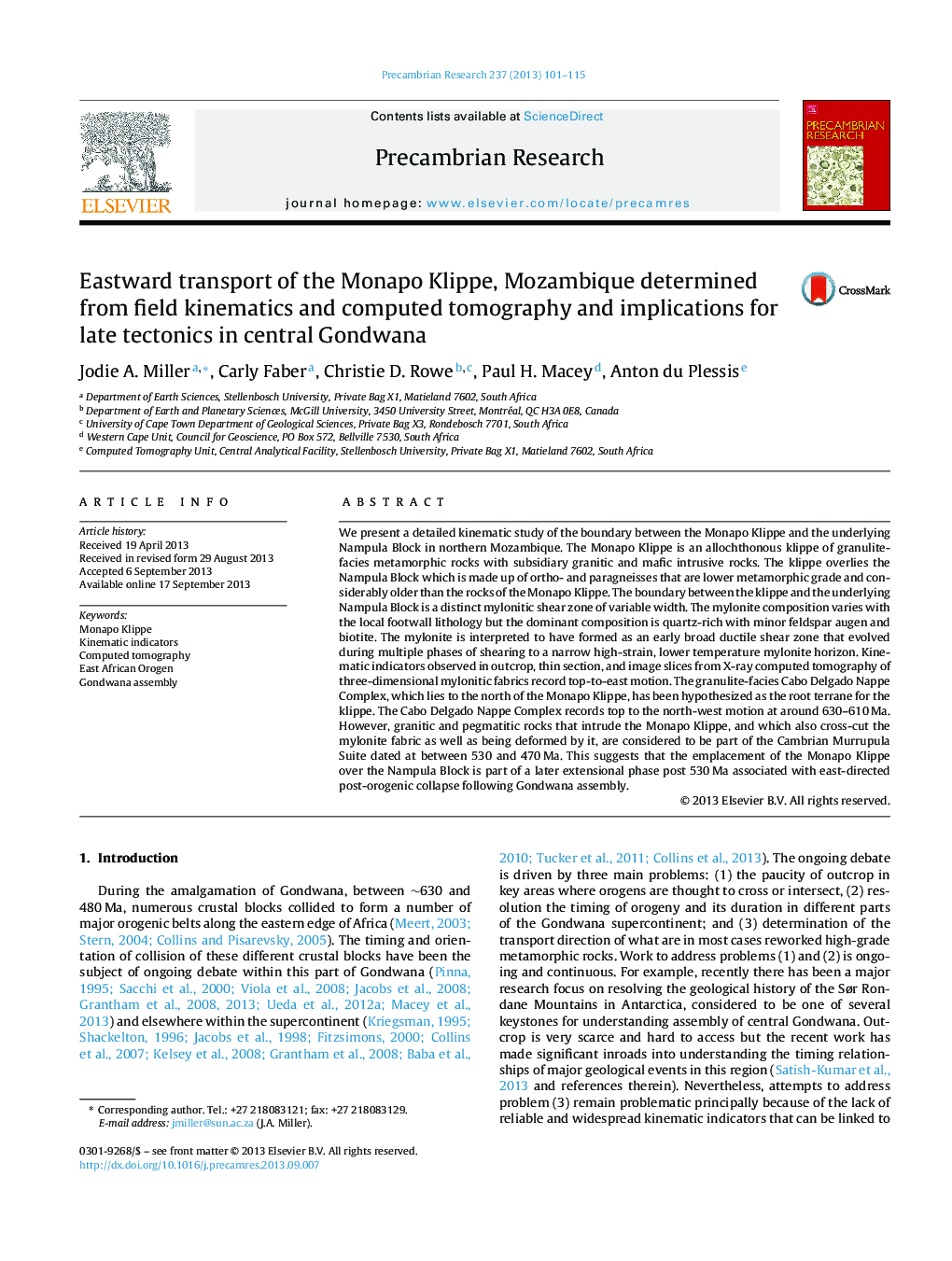| Article ID | Journal | Published Year | Pages | File Type |
|---|---|---|---|---|
| 4723262 | Precambrian Research | 2013 | 15 Pages |
Abstract
We present a detailed kinematic study of the boundary between the Monapo Klippe and the underlying Nampula Block in northern Mozambique. The Monapo Klippe is an allochthonous klippe of granulite-facies metamorphic rocks with subsidiary granitic and mafic intrusive rocks. The klippe overlies the Nampula Block which is made up of ortho- and paragneisses that are lower metamorphic grade and considerably older than the rocks of the Monapo Klippe. The boundary between the klippe and the underlying Nampula Block is a distinct mylonitic shear zone of variable width. The mylonite composition varies with the local footwall lithology but the dominant composition is quartz-rich with minor feldspar augen and biotite. The mylonite is interpreted to have formed as an early broad ductile shear zone that evolved during multiple phases of shearing to a narrow high-strain, lower temperature mylonite horizon. Kinematic indicators observed in outcrop, thin section, and image slices from X-ray computed tomography of three-dimensional mylonitic fabrics record top-to-east motion. The granulite-facies Cabo Delgado Nappe Complex, which lies to the north of the Monapo Klippe, has been hypothesized as the root terrane for the klippe. The Cabo Delgado Nappe Complex records top to the north-west motion at around 630-610Â Ma. However, granitic and pegmatitic rocks that intrude the Monapo Klippe, and which also cross-cut the mylonite fabric as well as being deformed by it, are considered to be part of the Cambrian Murrupula Suite dated at between 530 and 470Â Ma. This suggests that the emplacement of the Monapo Klippe over the Nampula Block is part of a later extensional phase post 530Â Ma associated with east-directed post-orogenic collapse following Gondwana assembly.
Related Topics
Physical Sciences and Engineering
Earth and Planetary Sciences
Geochemistry and Petrology
Authors
Jodie A. Miller, Carly Faber, Christie D. Rowe, Paul H. Macey, Anton du Plessis,
